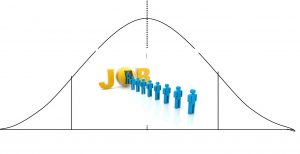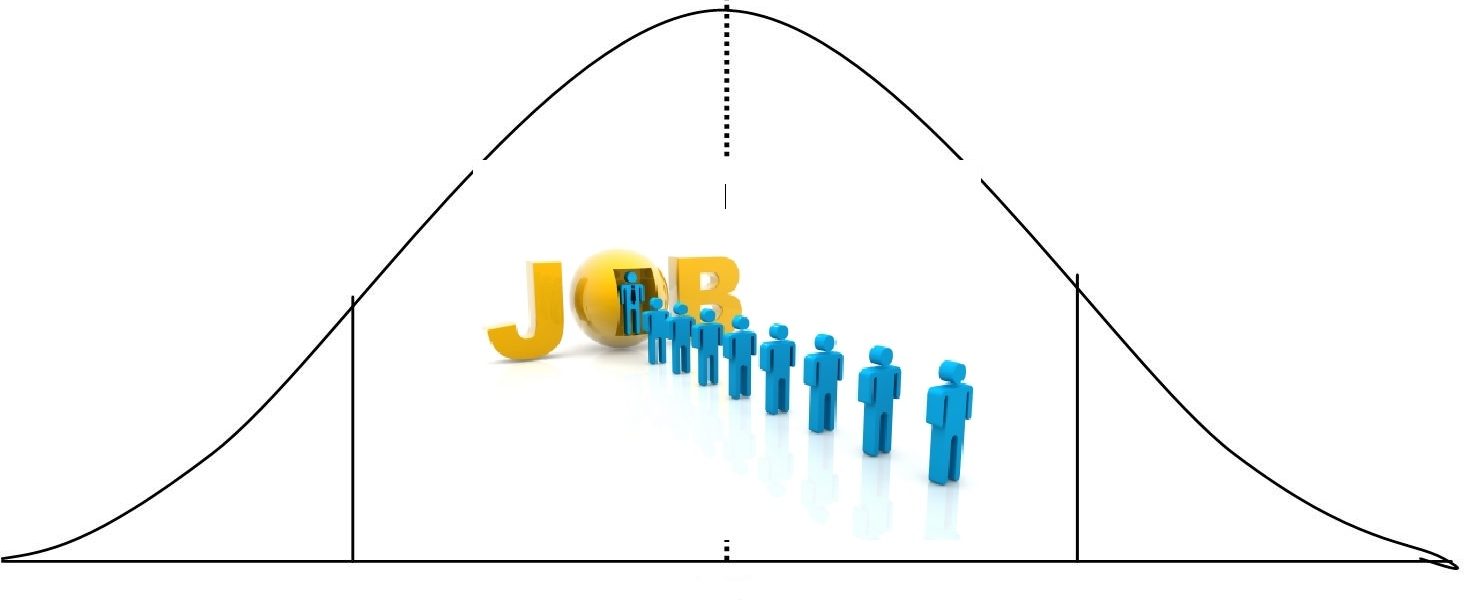While doing my doctoral work, my faculty mentor, Leonard Sweet, introduced me to the Well Curve. The Well Curve is the inverse of the Bell Curve, The bell curve defined “normal distribution” – and it became a fundamental law of natural science, an elementary truth about the nature of reality. “Charles Darwin’s cousin Francis Galton – who pioneered the related idea that everything from stock prices to your descendants’ IQs would eventually revert to the mean – called the bell curve “an unsuspected and most beautiful form of regularity.“ [1]

Today, the bell curve has been turned on its head, forming the well curve. While the bell curve distribution is still considered normal, a growing number of economic and social phenomena now seem to follow this inverted arc. Instead of being high in the center and low on the sides, this new distribution is low in the center and high on the sides.[1]
This includes the domain of the middle class. The Federal Reserve Board’s analysis of family finances between 1998 to 2001 showed that American incomes were up across the board. However, when economists broke the population into five equal segments, a well curve emerged. “Incomes grew at different rates in different parts of the income distribution,” the Fed reported, “with faster growth at the top and bottom ranges than in the middle.” [1]
What does this mean?
Tyler Cowen is an American economist, academic, and writer. He occupies the Holbert C. Harris Chair of economics as a professor at George Mason University. He is also the author of the 2012 book entitled, Average Is Over: Powering America Beyond the Age of the Great Stagnation. It is a sequel to Cowen’s 2011 book The Great Stagnation that argued that America had exhausted many of the low-hanging fruit (such as cheap land and easily achievable improvements in education) that had powered its growth in the 19th century and early 20th century. In “Average Is Over“, Cowen lays out his vision for the future trajectory of the global economy.
Cowen notes that the “longer-term trend is fewer jobs in middle-skill, white-collar clerical, administrative, and sales occupations. Demand is rising for low-pay, low-skill jobs, and it is rising for high-pay, high-skill jobs, including tech and managerial jobs, but pay is not rising for the jobs in between.” In other words, the well curve is at work in the middle class.
According to Cowen, of the jobs lost during the Great Recession, “about 60 percent of them were in what are called ‘mid-wage’ occupations.” And the jobs added since the end of the recession? 73% of them have been in lower-wage occupations, defined as $13.52 an hour or less. This general trend, namely more rapid growth in low-paying jobs, can be seen in the numbers from 1999 to 2007, so we can’t blame it on the financial crisis or the particular problems of today. “Demand is rising for low-pay, low-skill jobs, and it is rising for high-pay, high-skill jobs, including tech and managerial jobs, but pay is not rising for the jobs in between.”
Where has income risen?
Cowen makes fascinating observation:
If we look at the last ten years and divide the population up by education, there is only one group that has come out ahead with higher wages: individuals with advanced postgraduate degrees. If you had a PhD, on average your earnings went up a little over 5 percent, and if you had an MD, JD, or MBA, average earnings went up a little less than 5 percent. Even for holders of master’s degrees, earnings were down an average of about 7 percent. Average earnings were down about 8 percent for individuals with a bachelor’s and down 10 percent for individuals with some amount of college but no four-year degree. It’s clear: The world is demanding more in the way of credentials, more in the way of ability, and it is passing along most of the higher rewards to a relatively small cognitive elite. After all, the first two categories of earnings winners—namely those with advanced degrees—account for only about 3 percent of the US population.
In other words, education in general, and specifically the obtaining of advanced degrees, has led to higher income over the past 10 years.
What is causing this need for education? Technological advancements. Cowen states that it stems from “the increasing productivity of intelligent machines, economic globalization, and the split of modern economies into both very stagnant sectors and some very dynamic sectors.” There is an increase in the ability of machines to substitute for intelligent human labor, and if you can develop, program or use those machines, you have the potential for rising wages.
What do we need to realize?
Intelligent machines won’t take over the entire economy all at once. They will, however. slowly revolutionize our economy. And the Great Recession of 2008-2010 revealed an important truth: many workers had been overemployed relative to their skills. The “American economy is learning that—for structural reasons—it can’t afford as many mid-wage jobs as it used to. Businesses will make higher profits by slotting those workers elsewhere, but not back in other high- or mid-wage jobs, where they had been before.”
Would it be nice to see businesses take their profit and pay higher wages? Indeed it would. The business argument, however, is that the job is not worth the higher wage, especially when they consider an increase in benefits, particularly health care. “Kaiser Family Foundation estimates that a health insurance premium today for a family of four averages over $15,000 and within ten years’ time could be $32,000 a year or more. That’s more than a lot of workers are worth.“
The value jobs for the company, and thus the ones which receive the highest wages, are the managers, the upper level leaders of the company. They play a role of growing importance in coordinating complex, large-scale production processes.
Is this a good thing? Cowen doesn’t believe so, and I don’t either. He says, “is not necessarily a good and just way for an economy to run. It will be more productive, and it is true that economic productivity is correlated with many good or apparently good qualities, including higher earnings, better health (usually), and greater financial responsibility toward one’s family.” His is making an economic statement, not a moral one.
Morally,corporations have a social responsibility. Does that mean paying $15/hour for fast food workers? Maybe. Maybe not. The real question will be this: Can the company survive and turn a nice profit for its shareholders while managing the diversity of its stakeholders.
NOTES:
[1] Daniel Pink: The Shape of Things to Come in Wired Magazine, May, 2003.





[…] A bell and a well: the curving jobs economy in the 21st century […]